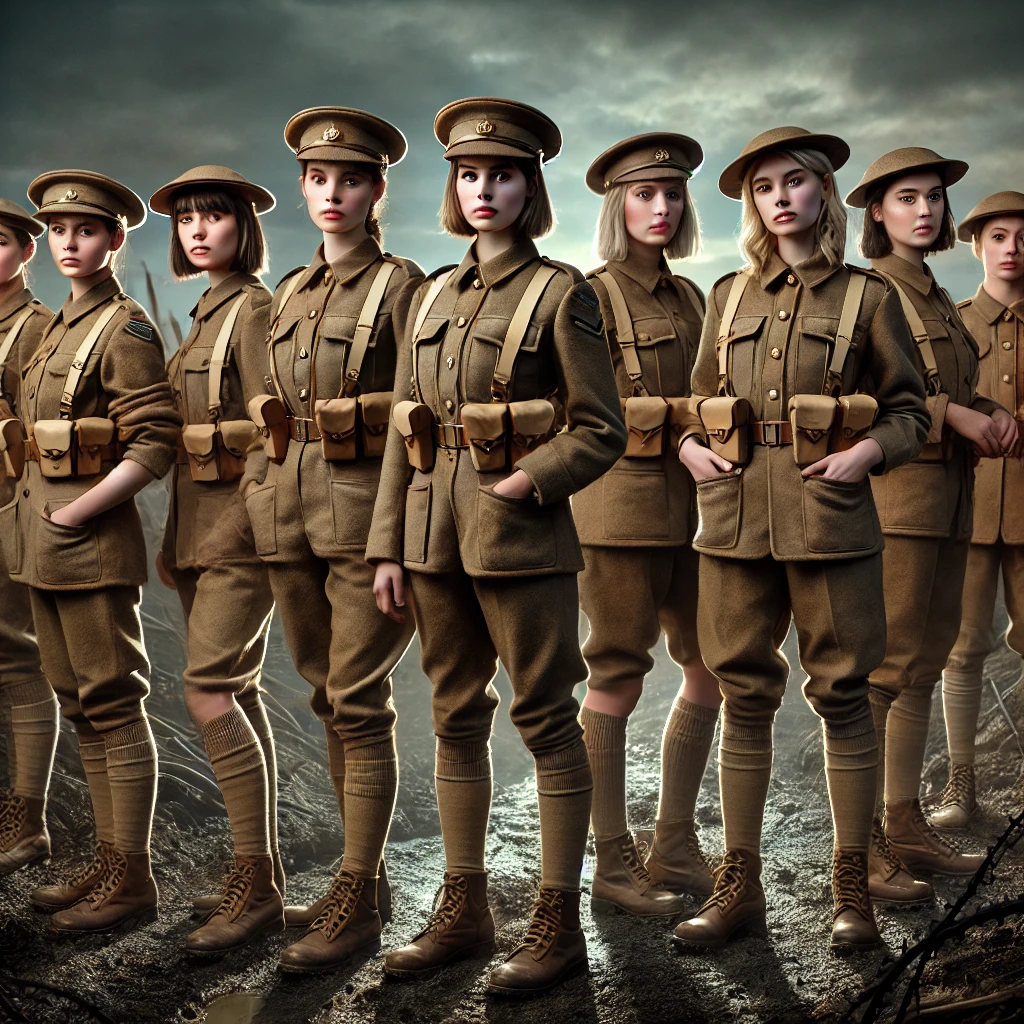
Iconic Uniforms of the British Army in World War I
Published on Jan 25, 2025
Uniform Features: What Did British Soldiers Wear in WW1?
The British Army uniform in World War I was designed for practicality and durability. Here’s what the iconic uniform typically included:
- Khaki Service Dress: The uniform's distinctive khaki color, introduced during the Boer War, was chosen for its camouflage properties. This "drab" shade helped soldiers blend into the battlefield.
- Tunic and Breeches: Soldiers wore wool tunics with four pleated pockets and reinforced breeches for ease of movement.
- Puttees and Boots: Long strips of cloth, known as puttees, were wrapped around the lower legs for protection and support, paired with ankle boots.
- Brodie Helmet: Introduced in 1915, this steel helmet offered essential head protection against shrapnel and debris.
- Webbing Equipment: Soldiers carried ammunition, a water bottle, and personal belongings in a webbing system, which distributed weight evenly.
Why Did the British Army Choose Khaki?
The switch to khaki uniforms marked a strategic shift. Before the 20th century, the British Army wore redcoats, which made soldiers easy targets. Khaki uniforms not only provided better camouflage but also symbolized the transition to modern warfare.
Evolution of WW1 British Uniforms
World War I saw the rapid evolution of military uniforms. Early in the war, soldiers were equipped with thick wool uniforms that were not ideal for muddy trenches. Over time, improvements were made:
- Lighter Fabrics: To enhance comfort in diverse climates.
- Protective Gear: Introduction of gas masks and reinforced helmets.
- Specialized Clothing: Pilots and tank crews received adapted uniforms for their roles.
Interesting Facts About WW1 British Uniforms
- Ceremonial Dress: While practical khaki dominated the battlefield, the British Army maintained ceremonial red coats for formal occasions.
- Uniform Recycling: Due to shortages, some uniforms were recycled from fallen soldiers—a stark reminder of war's harsh realities.
- Under Uniforms: Soldiers typically wore woolen undergarments for warmth during cold trench winters.
Comparing WW1 and WW2 British Uniforms
The British Army uniforms during World War II were an evolution of their WW1 predecessors. While maintaining the khaki color scheme, they incorporated modern fabrics and designs to better suit mechanized warfare.
Why WW1 British Uniforms Fascinate Collectors and Historians
Collectors value WW1 British uniforms for their historical significance and craftsmanship. Each uniform tells a story of the soldier who wore it and the battles fought in it. For history enthusiasts, these uniforms provide a tangible link to the past.
Where to Find Authentic WW1 British Army Uniforms?
At Paddelaters, we specialize in authentic and replica war uniforms, including those from World War I. Explore our collection to own a piece of history.
FAQs About WW1 British Army Uniforms
- What color was the British uniform in WW1?
The standard color was khaki, chosen for its camouflage properties. - What did soldiers wear under their uniforms?
Woolen undergarments provided warmth in harsh conditions. - When did the British Army stop wearing red coats?
The iconic red coats were phased out by the early 20th century, replaced by khaki for practicality in warfare.
Preserve the Legacy with Paddelaters
Whether you're a collector, historian, or reenactor, understanding the legacy of WW1 British uniforms offers a deeper appreciation for history. Browse our extensive range at Paddelaters and bring history to life.
